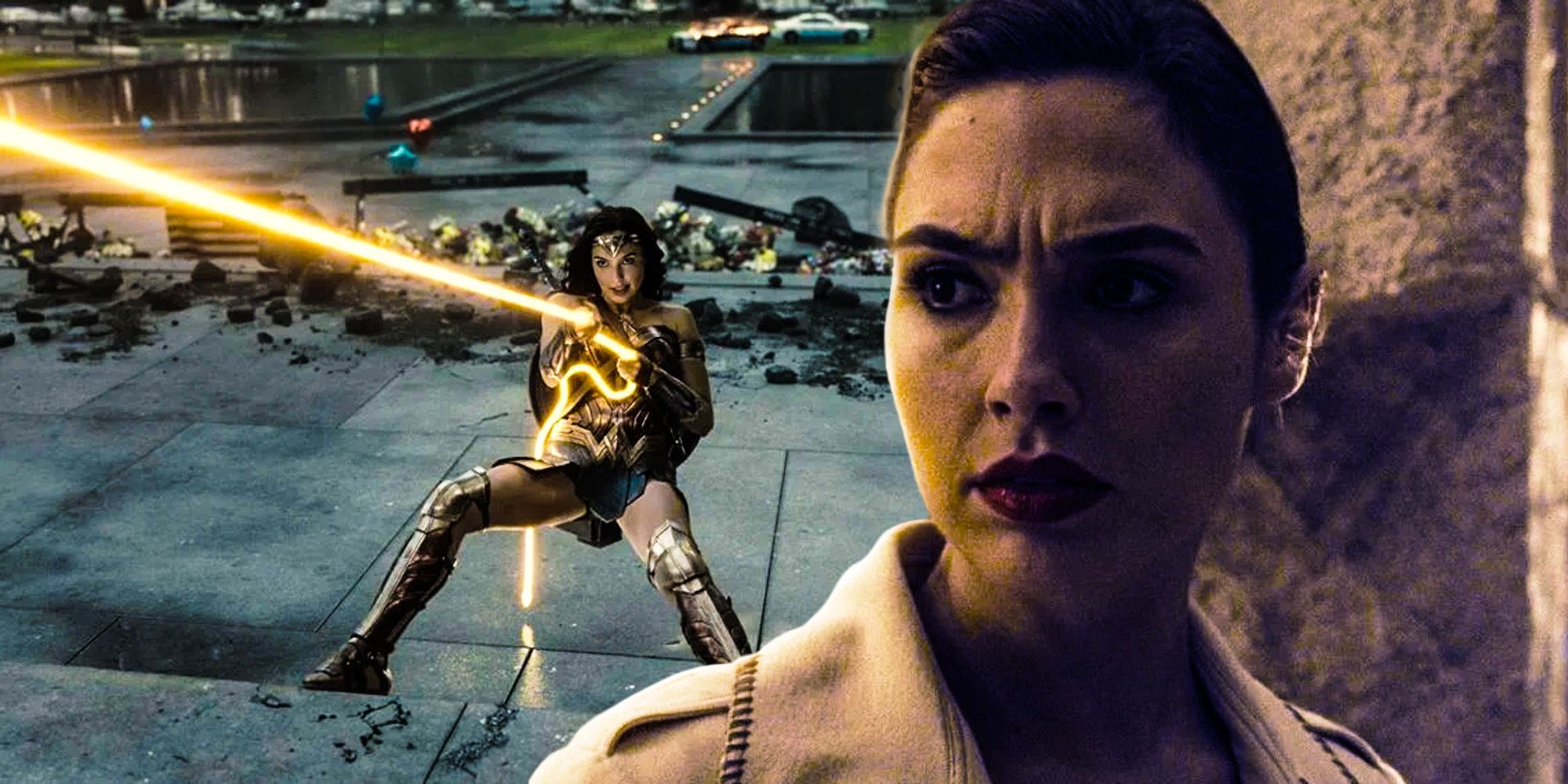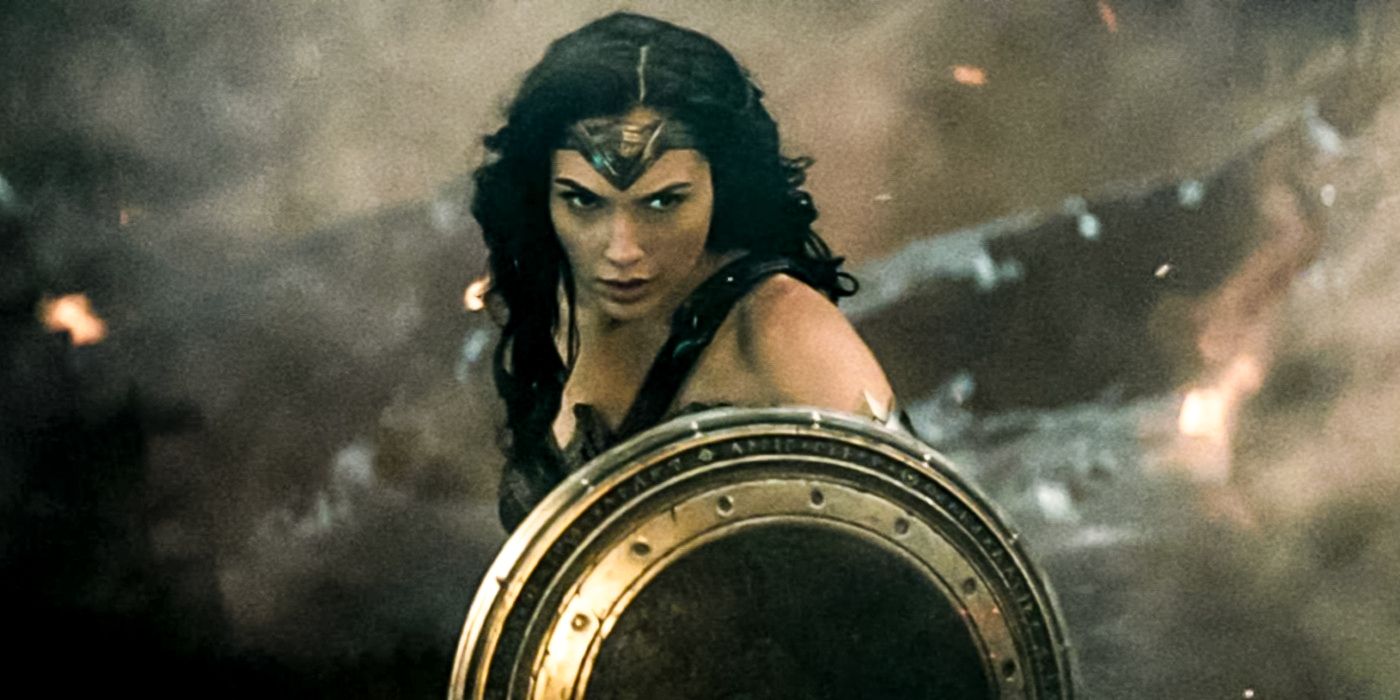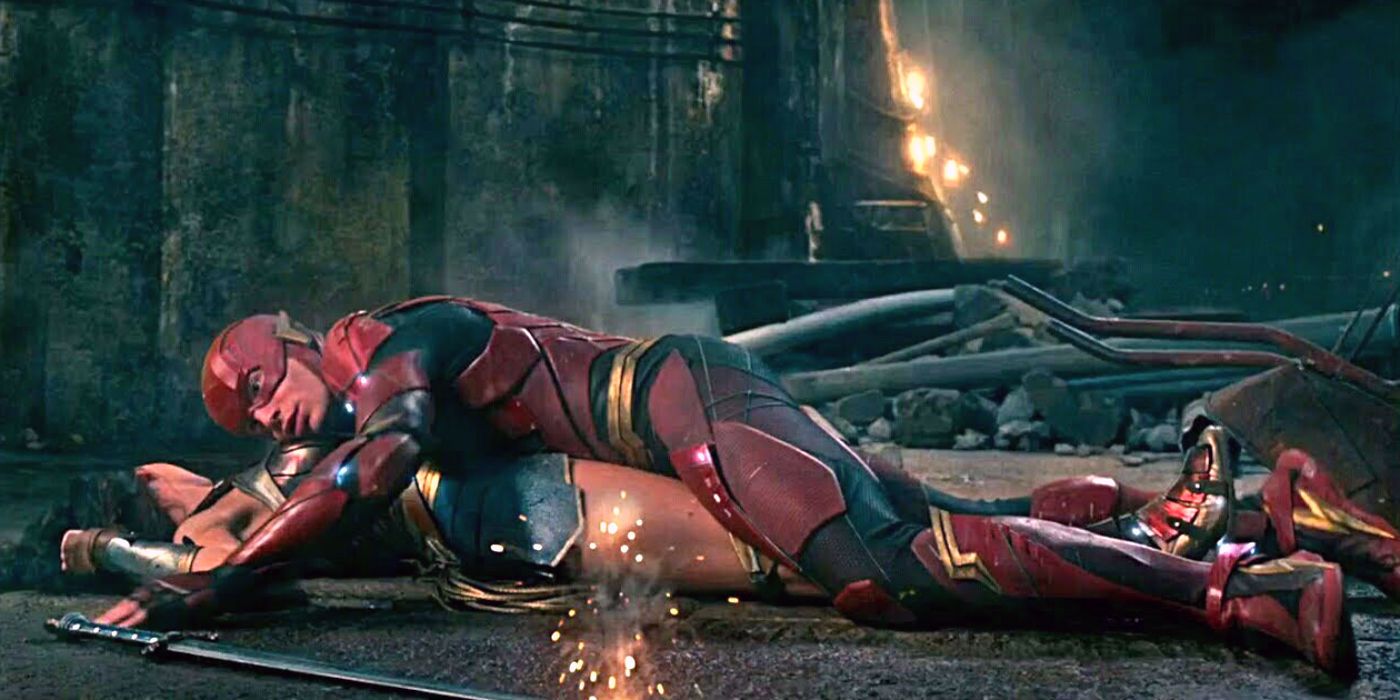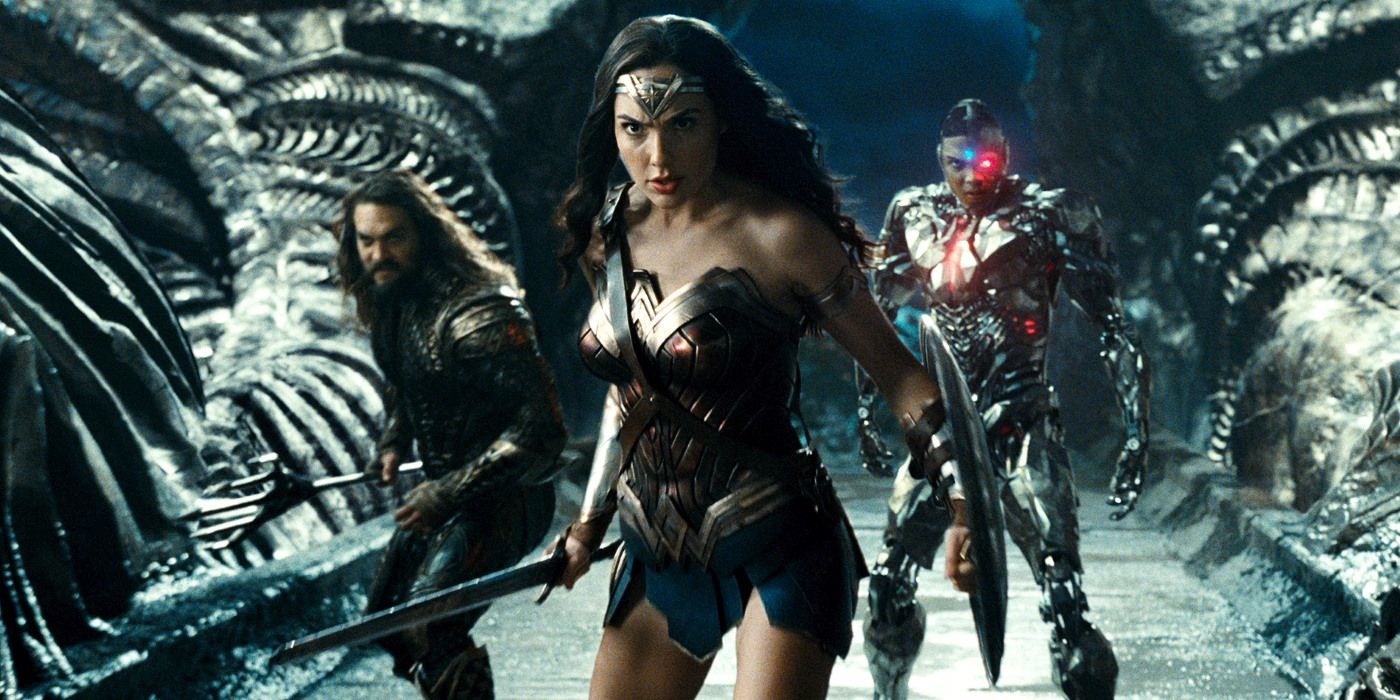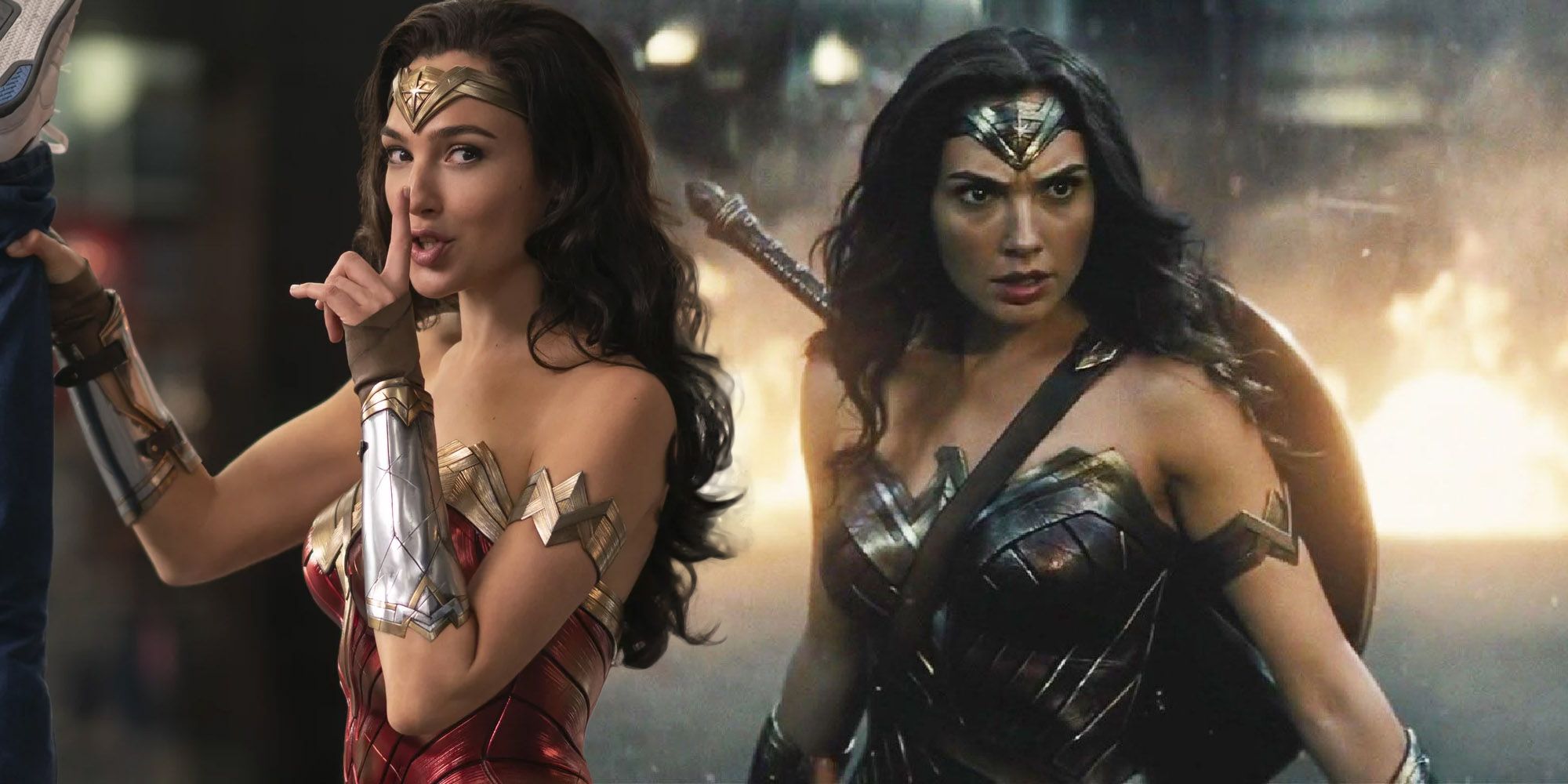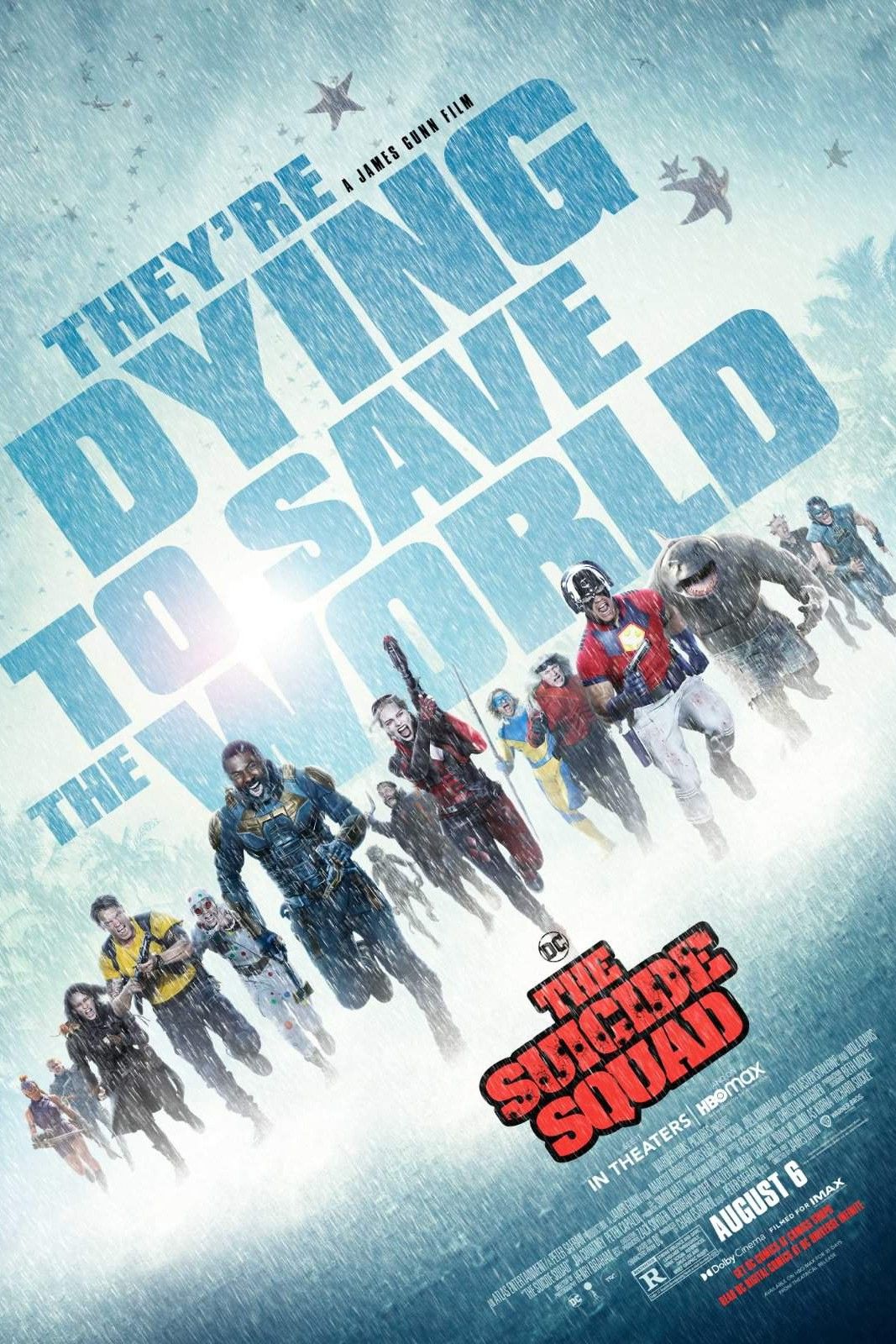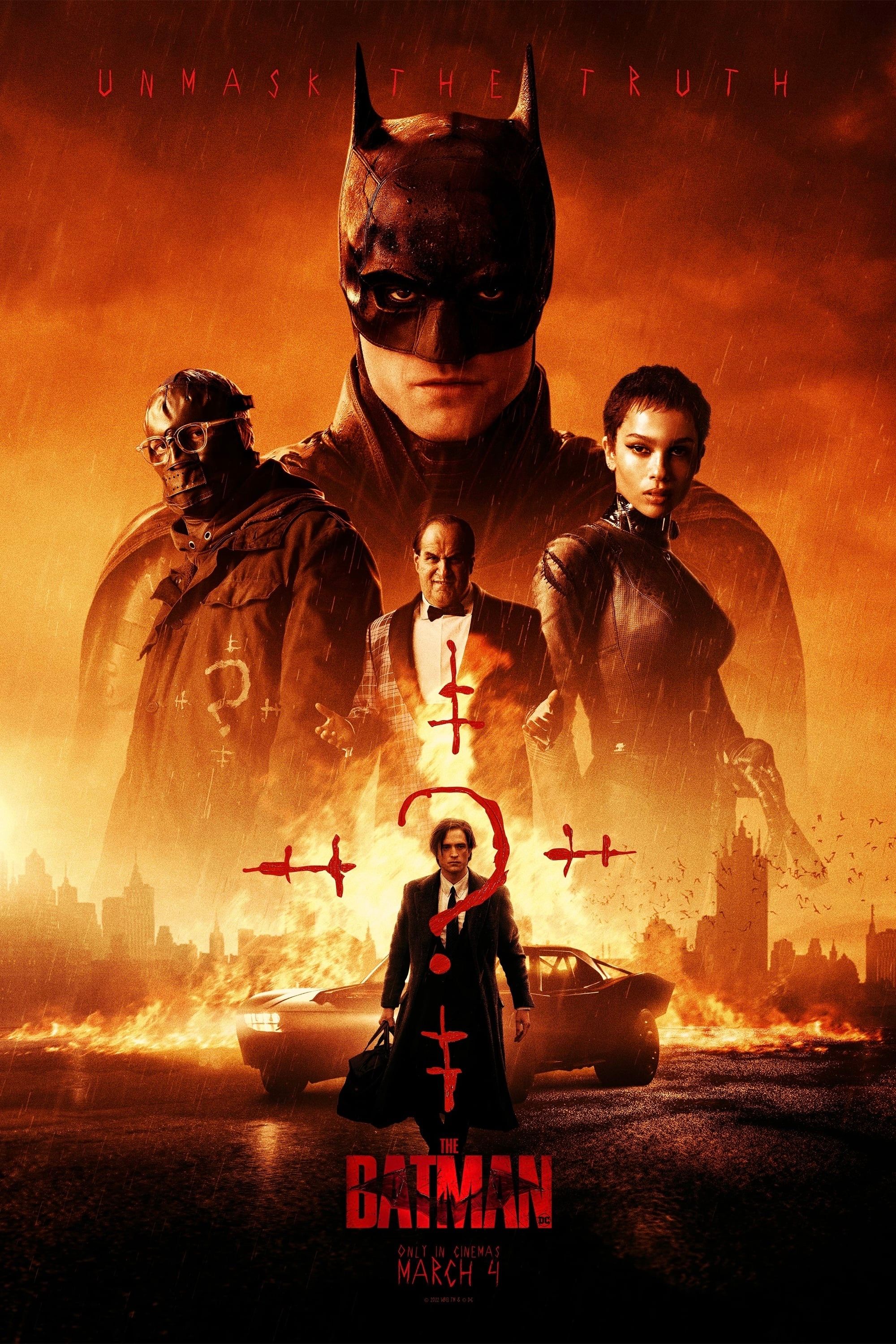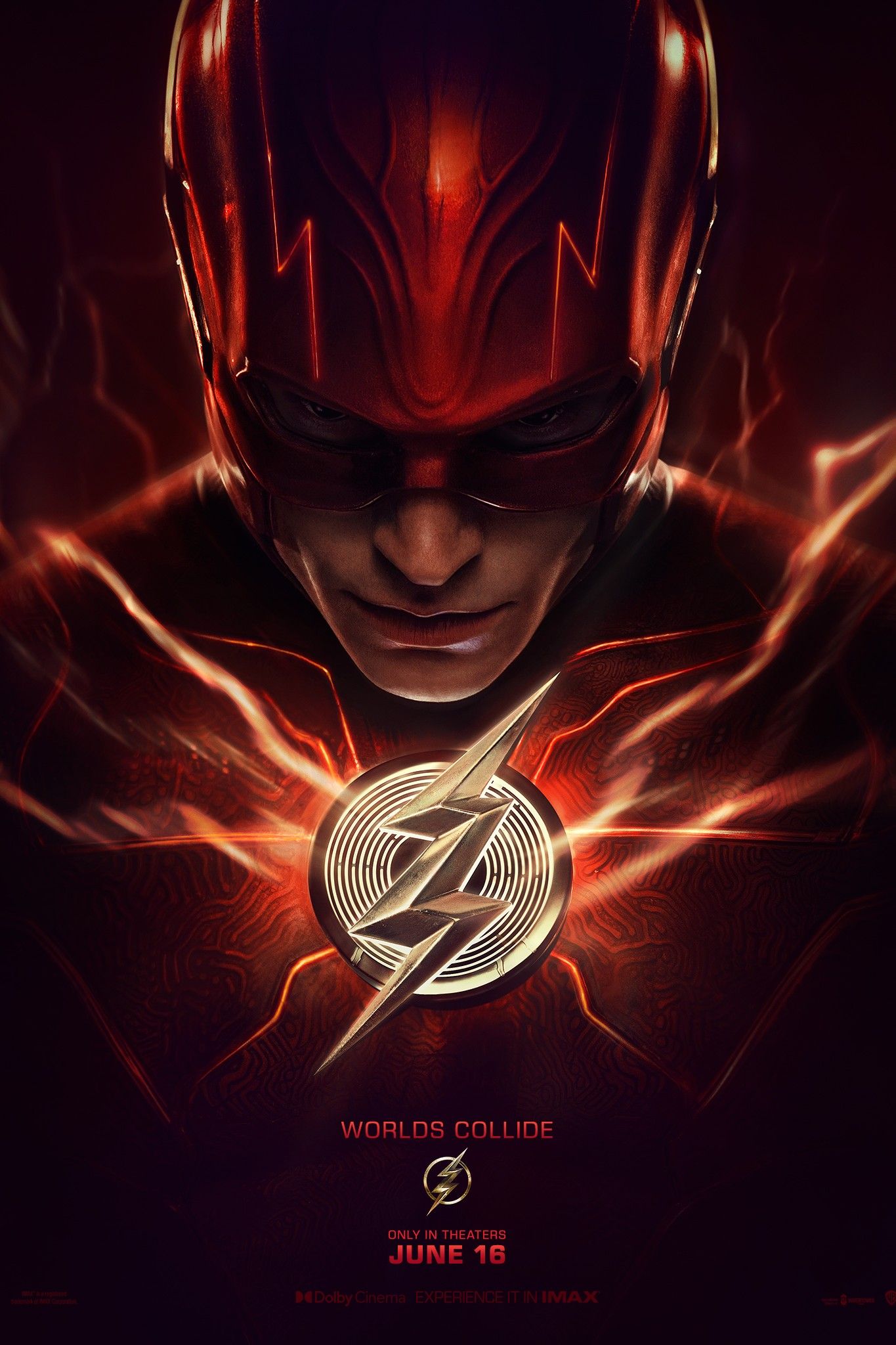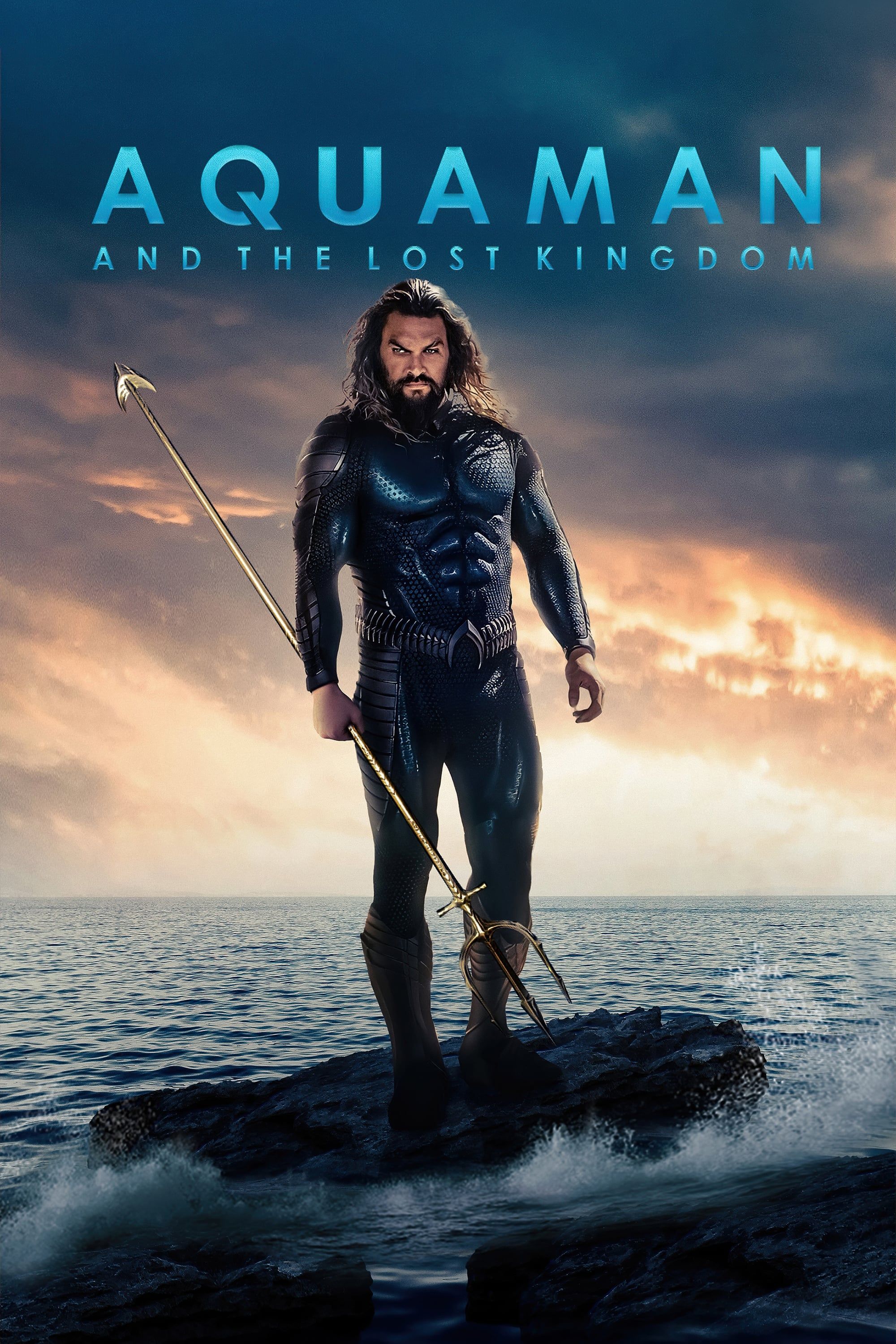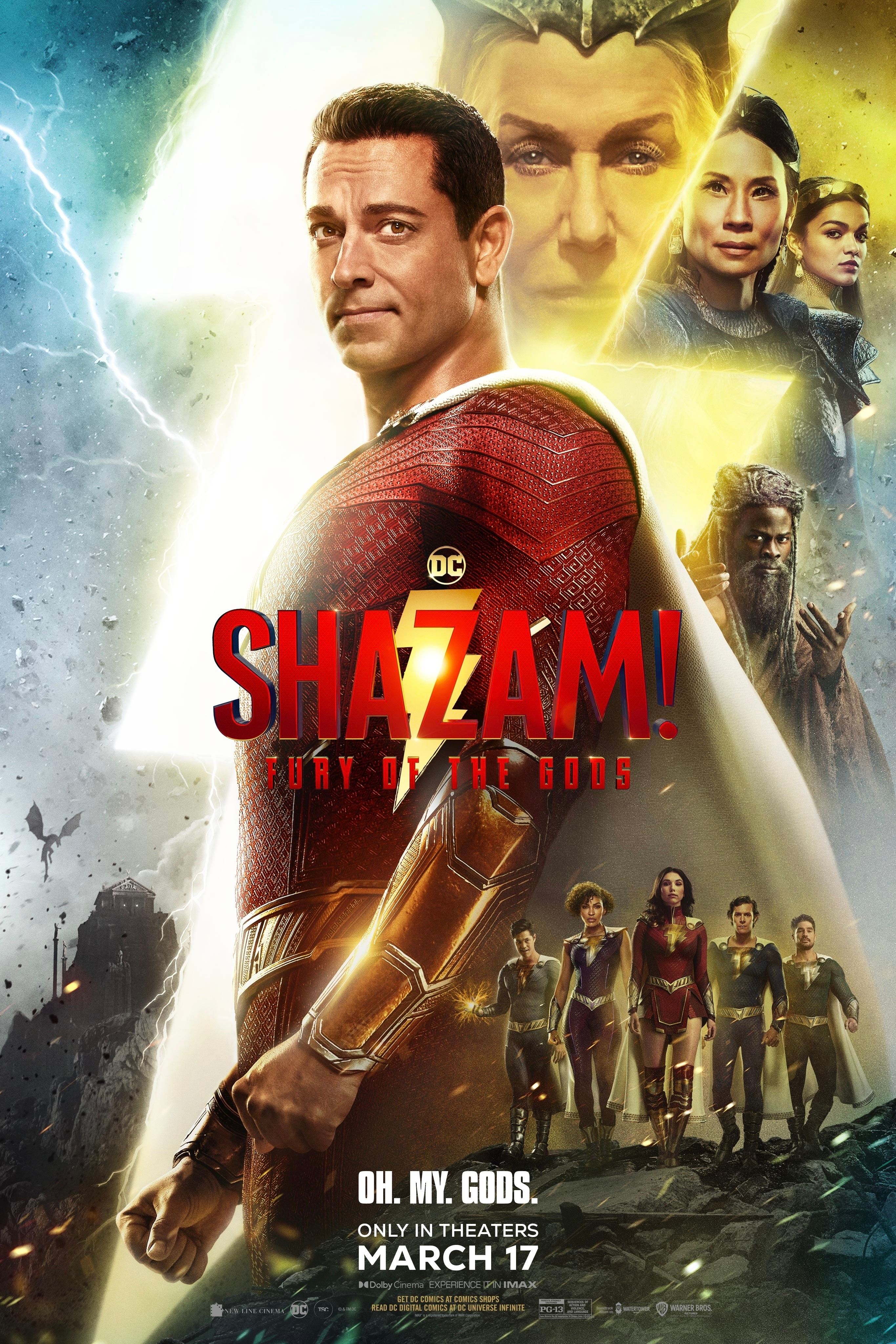Warning: SPOILERS for Zack Snyder's Justice League.
Zack Snyder's Justice League gave fans back the Wonder Woman they loved best and fixed the mistakes of Joss Whedon's theatrical cut as well as Patty Jenkins' Wonder Woman 1984. In the epic 4-hour Snyder Cut, Diana Prince (Gal Gadot) joins up with the rest of the Justice League to repel the invasion by Steppenwolf (Ciaran Hinds) of Apokolips. Happily, the Snyder Cut both expands Wonder Woman's role as a pivotal player in the saga but also restored her status as a formidable warrior who is part of the Trinity alongside Batman (Ben Affleck) and Superman (Henry Cavill).
Huge question marks surrounded Zack Snyder's surprising casting of Gal Gadot in the role of Wonder Woman, but they were immediately dispelled when the Amazon demi-goddess officially debuted in 2016's Batman V Superman: Dawn of Justice. Gadot was a relative unknown whose biggest acting role was as Gisele in three Fast and Furious films. But as daunting a task as becoming the first Wonder Woman to star in a feature film was, Gadot, under Snyder's direction, won fans over by creating a beautiful and powerful Amazon warrior who lit up the screen as she fought alongside Superman and Batman. Fans wanted more and, a year later, Patty Jenkins' origin film, Wonder Woman, became a global blockbuster and a pop culture phenomenon. Wonder Woman built on Zack Snyder's foundation and gave Diana Prince myriad dimensions while exploring her rise to her full empowerment as a warrior and as a superhero.
Sadly, Wonder Woman was wrapped up in the bitter disappointment that was the theatrical cut of Justice League. In order for the film to clock into the studio-mandated running time, Joss Whedon, who took over directing duties for the departed Zack Snyder, was forced to slice away numerous character-building moments and subplots. Wonder Woman was no exception and she was reduced to being the "token woman" in the League who merely played her role in the connect-the-dots plot. Three years would pass Diana Prince returned in the hotly-anticipated Wonder Woman 1984, but Patty Jenkins' sequel didn't hit the sweet spot. WW84 plunged Wonder Woman into a strange love story with the resurrected Steve Trevor (Chris Pine) while the villainous Maxwell Lord (Pedro Pascal) enacted a confusing plot involving magical wish fulfillment. By the end of WW84, Wonder Woman somehow seemed less special, despite the film's admirable themes and intentions.
This is why Zack Snyder's Justice League is such a triumph, not just for the embattled director whose grand vision was fulfilled, but for Wonder Woman as well. Here's how the Snyder Cut restored Wonder Woman's luster and status as the greatest superheroine in the DC Universe.
Zack Snyder's Wonder Woman Is A Version Fans Loved
Wonder Woman has existed for 80 years and has had myriad incarnations and interpretations. But when Zack Snyder introduced Gadot as Diana Prince in Batman V Superman, he had a fully-realized version in mind that perfectly suited the DC Universe he built on-screen. Snyder understood that Diana believes in peace and love but he embraced the fact that she's willing to fight for it. The Wonder Woman Zack Snyder and Gal Gadot showed the world was an experienced, clever, and intelligent Amazon princess who was built to fight and win the wars to come.
In fact, Zack Snyder's Wonder Woman was an incredible warrior, a five-thousand-year-old literal demigoddess who defeated gods and monsters alike. Wonder Woman's ferocity in Batman V Superman's climactic battle against Doomsday told viscerally told fans everything they needed to know about her; while Batman was outmatched and Superman was overwhelmed by the Kryptonian beast, Wonder Woman repeatedly launched herself at Doomsday with a wicked smile as she hacked away at the creature with her sword. For all of Superman's sheer power and Batman's tactical genius, it was clear Wonder Woman was at another level entirely. Fans adored her and understandably wanted more.
How The Snyder Cut Fixed Joss Whedon's Wonder Woman Mistakes
Joss Whedon's cut of Justice League infantilized the superheroes and turned Wonder Woman into a den mother who complained, "I'm working with children." Worse, Whedon's reshoots also hypersexualized Wonder Woman and he added the infamous moment when the Flash (Ezra Miller) falls on top of her in an unfunny visual gag. Whedon also had Batman cruelly use the memory of Steve Trevor against her when he urged for Superman's resurrection. The Snyder Cut's Wonder Woman has made peace with saying goodbye to Steve (twice) and she understood that they needed Superman on their side if they were going to win. The Snyder Cut also deepened Wonder Woman's relationship with Aquaman (Jason Momoa) and explored how the ancient rivalry between Amazons and Atlanteans needn't apply to them.
In the theatrical cut of Justice League, Whedon was forced to remove much of the depth of Wonder Woman's character and her crucial role in the story. Gone was how Wonder Woman traveled to Crete after her mother, Queen Hippolyta (Connie Nielsen) launched the flaming arrow of Artemis to warn her daughter that Steppenwolf had come to Earth. Diana still traveled to Gotham City to join Batman's crusade to recruit more heroes, but the Snyder Cut restored how Wonder Woman's investigation of the ancient murals about Darkseid buried in Crete reconnected her to the Amazon race she left behind a century before.
Instead, in Joss Whedon's version of Justice League's ending, Wonder Woman realized that she had to connect with the people she saves. But in the Snyder Cut, Wonder Woman already had that connection and clearly inspired people. In Snyder's Justice League ending, Wonder Woman returns to Crete and gazes out into the Mediterranean at Themyscira, her home she can't ever return to. While this could set up Wonder Woman 3 (but it may not since the Snyder Cut isn't considered DCEU canon), Snyder's ending fittingly brings the 100+ year cycle of Wonder Woman's story since she left Paradise Island with Steve Trevor full-circle and is more thematically poignant.
Wonder Woman In The Snyder Cut Is A Warrior Again
Zack Snyder a profoundly talented visual stylist and a great action director, and nowhere is this more evident than Wonder Woman's action scenes in the Snyder Cut. Watching Wonder Woman fight in Zack Snyder's Justice League is an eye-popping joy to watch, whether she's deflecting machine gun bullets in superspeed or tossing Steppenwolf around all by her lonesome. Snyder's kinetic slo-mo action style that he innovated in 300 (and Patty Jenkins duplicated in Wonder Woman) is back in the Snyder Cut, and Wonder Woman fighting is simply awesome to behold.
While Superman is established as the most powerful member of the Justice League, Wonder Woman is a close second and there's little doubt that she could have beaten Steppenwolf by herself in a one-on-one fight without constant Parademon interference. Wonder Woman's combat prowess is in full gear in the Snyder Cut, and it's incredibly significant that Diana got the final blow in when she beheaded Steppenwolf as Superman hurled the alien's corpse through the Boom Tube to Darkseid's feet. By the end of Zack Snyder's Justice League, Wonder Woman's status as the biggest badass among the superheroes is unquestionable, and the fierce warrior fans fell for in Batman V Superman is truly back.
Zack Snyder's Justice League Improved On Wonder Woman 1984
For Wonder Woman 1984, Patty Jenkins attempted a 21st-century reboot of the classic Wonder Woman TV series, complete with a cameo by Lynda Carter. WW84 introduced a more powerful and self-assured Diana, but the film tamped down her warrior aspects. At no point does Wonder Woman pick up her signature shield and sword; instead, WW84 introduces innovative ways Diana uses her magic Lasso of Hestia for attack and defensive purposes. Compared to Batman V Superman, Wonder Woman, and Justice League, there was relatively little action in WW84 in spite of the film's length, and Jenkins made a point that Diana saved the world by using her heart and compassion, not her fists, to defeat Maxwell Lord. While WW84 has its fans, it didn't please the greater audience who were looking to feel inspired and empowered by Diana the way they were lifted up by her unforgettable "No Man's Land" sequence in Wonder Woman.
However, Zack Snyder's Justice League - which is set 33 years after WW84 - managed to envelop and enhance every previous cinematic appearance of Wonder Woman into a best-of-all-worlds version of the superheroine. Diana's intelligence, wit, compassion, and heart are all still there and evident throughout the Snyder Cut, but the director's instincts always zero in on Wonder Woman as a fighter and as an inspirational leader. And yet, Snyder seems to also include a subtle nod to Diana learning how to fly in WW84 as she is seen in flight leading the Justice League's charge at Steppenwolf in the climactic battle. While WW84 can be lauded for exploring the softer side of Wonder Woman, Zack Snyder's Justice League was about the entire world about to be subjugated by aliens. It wasn't a place for Diana's peace and love, it was the time for Wonder Woman as a harbinger of war. Wonder Woman and the League's victory in Zack Snyder's Justice League was a win for the heroes, for Diana Prince, and for those who have felt let down by her last few movie appearances.

